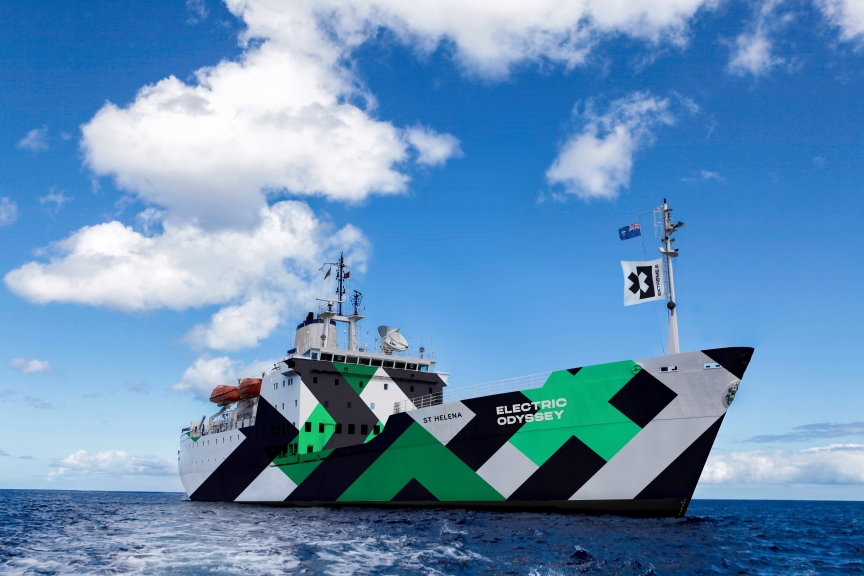St. Helena's graphene testing

The St. Helena is an integral part of the Extreme E series, from transporting all of the championship’s freight, including the all-important ODYSSEY 21 electric SUVs, to providing a space for scientific research in its onboard laboratory. However, it is also a test opportunity for new maritime materials.
Enter graphene – a new anti-corrosion coating additive, known to be the one atom thick layer of pure carbon ‘wonder’ material. It is the strongest material ever measured, while its capabilities as an energy and thermal conductor are well recognised in the field.
Singapore-based 2D Material Pte is working with the series to test WEG’s anti-corrosion graphene coating with test panels being installed on the St. Helena, which will be monitored during its global voyage through different oceans and climates.
2D and WEG have been working together since 2020 and the next stage in the material’s development is testing in actual environments to yield important data – enter the St. Helena.
Chief Technical Officer of 2DM, Dr Ricardo Oliveira, explains, “current anti-corrosion coatings contain a high amount of zinc and a high concentration of this metal in the marine ecosystem can be toxic for ocean life. By replacing some of the zinc with graphene, we can potentially reduce the environmental impact of our marine activities. 2DM and WEG is taking a positive step forward by developing and testing anti-corrosion marine coatings to help the environment. We are very excited and proud to be able to have our test samples installed on Extreme E’s St. Helena.”
2DM has been producing high-quality graphene based on the recently announced ISO standards since 2020 in the tons per annum scale. Following its strategic partnership in 2019 with CBMM - a Founding Supplier of Extreme E providing its niobium products in the chassis of the series’ electric racing vehicles - 2DM grew from a pilot plant into a fully functional commercial facility last year.
Other than producing and supplying graphene, 2DM is helmed by renown scientists such as Dr Ricardo Oliveira and Professor Antonio Castro Neto, both of whom are well qualified and experienced to provide technical assistance to clients looking to integrate 2DM’s graphene into their products. 2DM is also well-informed by its advisory board, many of whom are experts in their respective fields, including Sir Konstantin Novoselov, the Nobel Laurette for Physics in 2010 for the discovery of graphene.
Extreme E’s climate goal is to use its electric racing to highlight remote environments under threat of climate change issues, and to encourage us all to take positive action to protect our planet’s future. However, it’s not just about electric vehicles. It’s about all steps, big and small, that can have a positive impact on the environment and graphene is certainly one of those.
The series looks forward to seeing the results of graphene on the St. Helena and how this can be implemented further.